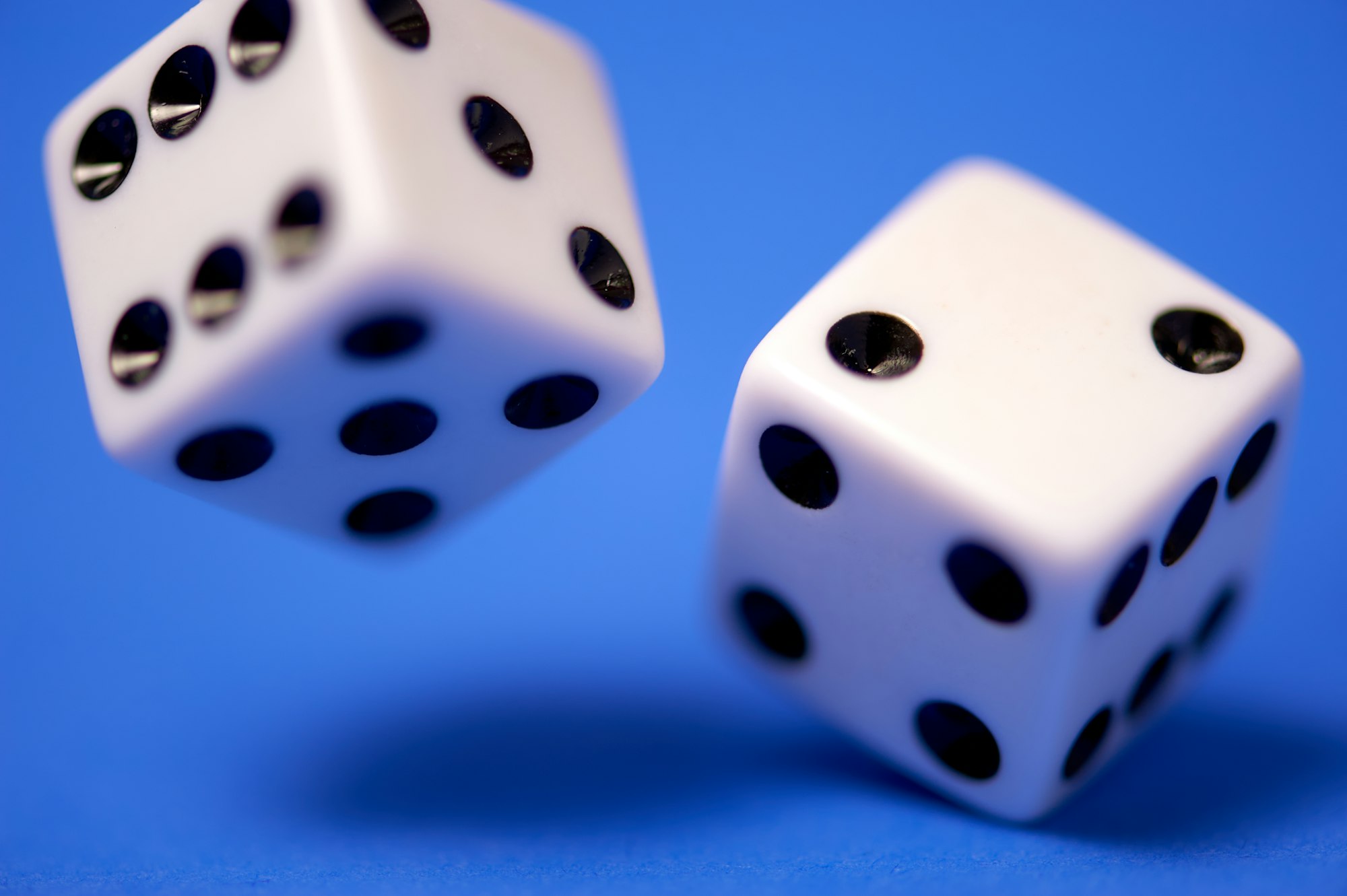Terningespil: bodega dice games 🎲
Two dice games typically played in Danish bodega bars, using leather dice cups.

Game 1: Snyd
Short background
Comes from a traditional Chilean game called Dudo (which means I doubt or I hesitate in Spanish). Known in France as Perudo
Objective
Snyd is a Liar's dice game consisting in guessing the total number of dice of a particular face when combining everyone's (hidden) hands. Players bid higher and higher up until someone calls "Liar" / "Bluff" and the latest big is checked against. The goal is to get rid of all your dice.
Preparation
- Number of players: 3 at least, the more the merrier
- Number of dice: 4 or 5 per player
- How to start: determine who starts as you wish (e.g. roll one dice each and the highest starts, or the youngest starts)
Rounds
- At the beginning of each round, everyone shakes and rolls their dice under their cup and looks at their hand while hiding it from the other players.
- The first player starts by bidding the number of dice that they think there might be, when combining all dice that are still in the game. Example: "I think there are five 4's"
- Then (clockwise or counterclockwise) the next player has to choose to continue bidding or call "Liar" or "Bluff".
- To continue bidding, at least one of the numbers must increase, and the number of dice cannot decrease. With the previous example, the next player can either bid six or more 4's or five 5's or 6's
- Calling "Bluff" triggers a challenge between the caller and the latest bidder: if there are at least the number of dice of that particular face when revealing all dice, the bidder wins and the other loses. And vice-versa.
- The loser keeps all their dice and all other players remove one dice each from the game. The loser starts the next round.
- Note: 1 is a joker. It counts as any number, whatever gives advantage to the higher bidder. For instance, if the bid is five 4's, and there are three 4's and two 1's when all dice are revealed, the bidder wins.
- The last player with at least one remaining dice loses the game
Optional extra rules
Pick and choose
Trappe / Suites
If your hand is a suite of N dice starting by 1 (e.g. 1-2-3-4 if you have four dice), then it counts as N+1 jokers (five in this example).
Only one look
People are allowed to look at their dice only once, after rolling them.
Exact number
Instead of bidding higher or calling bluff, one can also say that the last bid is "exact" (e.g. that there is exactly five 4's not less not more) and win if that's the case.
Perudos
When bidding on 1's, it is allowed to divide by two the number of dice that are bid on. Example: if the previous bid was five 4's or six 4's, then three 1's. When going back up in face value (i.e. 2's to 6's) then one must multiply by 2 and add 1. Example: if the previous bid was three 1's, then the next player doesn't want to big a higher number of 1's, they must say at least seven of any other value.
Lives
When losing a game, one can lose a life. You can keep count of lives by having one extra dice per player and starting with 6 (or any other number). Typically in bodegas, people play with Tuborg dice mats. When losing once, the mat is turned upside down. If the player loses and turns it again face side up, they must offer a round of drinks to the whole table.
Game 2: Meyer
Objective
Meyer is another Liar's dice game where people bid on a combination of two dice until someone calls bluff
Preparation
- Material: 2 dice, 1 cup, and 1 additional dice per player (at 6, to start with 6 lives)
- How to start: as you wish (e.g. youngest first, first round as trial round)
Rounds
The first player rolls the two dice under the cup and looks at their hand while hiding it from the other players. Then, they can do one of the following:
- Say what they have in their hand
- Bluff and bid even higher
In turn, the next players (clockwise or counterclockwise) can do one of the following:
- Call bluff and asking the previous player to reveal the dice and check whether their bid was lower or equal to what is revealed.
- Trust the previous player, roll the two dice themselves, and then either:
- Say what they have in their hand (but it must be at least equal or higher than the previous bid- see table below)
- Bluff and big even higher
- Rethrow the dice, not look at them, and pass the cup blindly to the next player with the same bid as the previous player, hoping that the combination is at least as good.
- When a player challenges an other by calling bluff, the loser loses one life and turn its own dice accordingly. The loser starts the next round.
- The last player alive wins the game
Hierarchy of combinations (from highest to lowest)
| Combination | Name |
|---|---|
| 1+2 | Meyer |
| 1+3 | Little Meyer (Lille Meyer) |
| 6+6 | Pair of 6 |
| 5+5, 4+4, etc. down to 1+1 | Pair of 5, 4 etc. down to pair of 1 |
| 6+5 | 65 |
| 6+4, 6+3, 6+2, 6+1, 5+4, etc. down to 3+2 | 64, 63 etc. down to 32 |
Variations
Killing spree
When a challenge involves a bid of Meyer (1+2), the loser loses 2 lives instead of 1. However, one can choose to trust the previous player, lose only 1 life and pass it on to the next player. That player can either do the same and continue the killing spree or challenge the initial Meyer bidder. If the cup goes back to the initial player who bid Meyer, then the round is closed, the dice are not revealed, and that player starts a new round.
Do it yourself leather dice cup (raflebæger)

From Læderiet.dk: https://www.laederiet.dk/inspirationsblog/35-raflebaeger-i-laeder/
